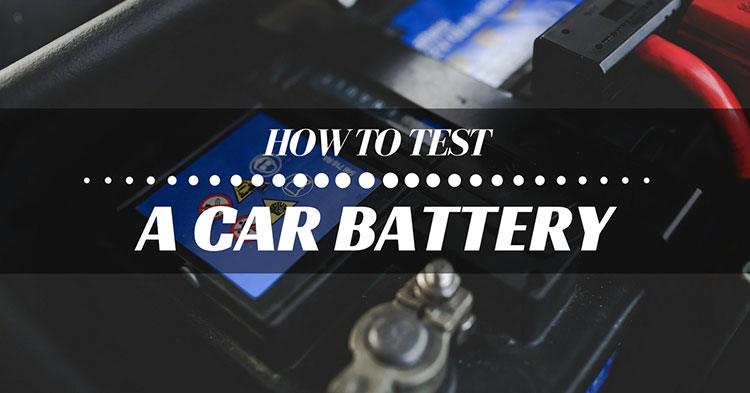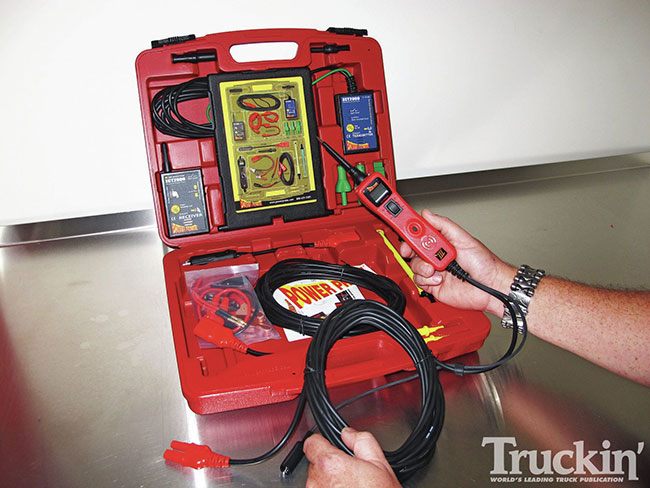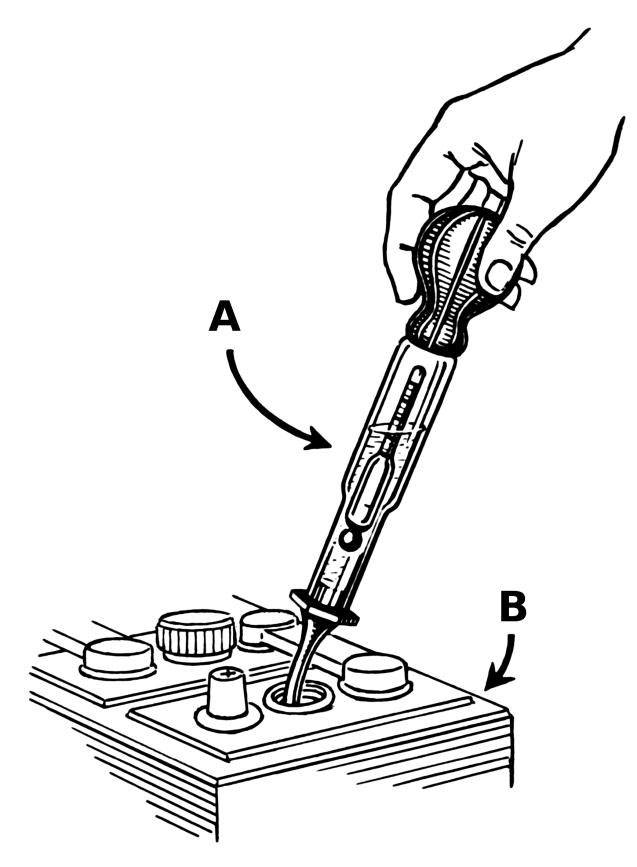
Learn How to Test a Car Battery in These 6 Amazingly Helpful Ways
You obviously know that the battery is a very important part of the car, and the whole system of powering your engine up depends on it. If it is not properly maintained, there is a large chance for corrosion to occur, which might be very detrimental in the future.
More...
What causes car battery corrosion is the reactive oxygen gas that is released from the acid in the battery. For effective functioning of the battery, it is important for you to take care of your battery and maintain it in a way that it performs tasks just like you want it to. So keep reading on to find out how to test a car battery and maintain it in the most convenient ways possible.
Procedure 1: Check Your Battery with A Voltmeter
For this method, all you need is an accurate voltmeter. You can choose either an analogue or a digital voltmeter, your choice, but using a digital voltmeter would be better as it is easier to read and gives you an accurate measurement.

What Should You Do Now?
- Before starting off with testing this, you should make sure that your car’s ignition key and all the lights are turned off.
- After making sure of that, you move on to the next step where you should remove the battery’s positive terminal cover. It is recommended to check these terminals and clean them as well.
- The positive lead of the voltmeter, which is mostly red, should then be connected to the positive terminal of your battery. Similarly, connect the negative lead of the voltmeter to the negative terminal of your battery.
Now, the results the voltmeter will show are going to vary depending on the condition of your battery. If your battery is in good condition, the voltmeter will show a value between 12.4 and 12.7 volts.
- If the voltmeter shows a value lower than 12.4 Volts, it means that your battery is weak and requires to be charged.
- In case of the resulting voltage being lesser than 12.2, give your battery a slow charge, and then re-check through the voltmeter by following the same steps.
- In case of the voltmeter showing a value more than 12.9, it is an indication that your battery has excess voltage. In that case, you can turn the high beams on, so that you can remove the excessive voltage charge. A high voltage may also be an indication that the alternator is overcharging the battery.
Watch a YouTube Video illustrating the whole process in a much more detailed way over here.
Procedure 2: Use A Power Probe to Check Your Battery
So, basically, a Power Probe is a device used in diagnosing and testing circuits. Using this, testing the car battery would indeed be less complicated than with a voltmeter. Besides, a Power Probe will do the job faster and more accurately than other methods.

Via trucktrend.com
What Should You Do Now?
- To start with testing your car battery, repeating the steps mentioned earlier, you must remove your battery’s positive terminal cover.
- The Power Probe’s positive lead is then to be connected to the positive terminal of your battery, as was done in the voltmeter method. Similarly, connect the negative lead of the Power Probe to the negative terminal of the battery.
- The tip of the Probe is then attached to the positive terminal of the battery.
- Check the Power Probe reading, as it shows the voltage. The voltage should be between 12.4 and 12.7 Volts. If less or more than 12.2 or 12.9 respectively, follow the above-mentioned steps in the voltmeter method and do it all over again.
The Power Probe is a very efficient device that will benefit you the most if you live in an area where the weather is mostly cold, or if you are frequently uncertain about the condition of the battery, hence feeling like you need to test it repeatedly.
Find a YouTube Video illustrating the use of this Power Probe in a more detailed way here.
Procedure 3: Crank the Engine to Check Your Battery.
This is a method that involves the use of a Power Probe. All you need to do in this method is to ‘Crank’ the engine. You can do that by turning on the ignition to the point where the starter is engaged and then you must hold it for two seconds. While you observe the battery’s voltage drop, have an assistant crank the engine for you.

At the time of the crank, you should check the voltage. The Power Probe should not be showing a voltage reading less than 9.6 Volts. A voltage that is going below 9.6 will easily indicate that your battery is sulfated and is not accepting the charge.
Procedure 4. A Hydrometer Check
A hydrometer is basically a fluid device that is used to measure the specific gravity of the battery electrolyte to determine its state of charge. This device can be used to determine how strong or weak the acid in the electrolyte or the battery fluid is.
In this way, you can determine the wellness of your car battery conveniently. It is basically dipped into the cells, one by one, and the reading gives you a good check of how strong your battery is.

Via wikimedia.org
However, this method is worthless if you want to know the capacity of your battery, i.e. if it is able to sustain its charge in a way that it performs just as you want it to.
The capacity basically depends on the amount of plates that are present in each cell. The cell’s capacity is affected if the number of plates is varied or if any damage comes to any of these plates.
However, this method might not work if you have a sealed-for-life battery in your car, as the electrolyte in that battery cannot be tested.
Watch a YouTube video to get to understand how to use a Hydrometer over here.
Procedure 5. Getting A Battery Condition Indicator
Some cars come pre-fitted with a Battery Condition Indicator, but you can get this fitted into your car anytime just to be sure about your battery condition.
This Indicator is more like a built-in voltmeter for your car battery, and it is marked in semi-circle bands in the sequence of red-green-red color.
- On switching on the ignition, the arrow will point towards the 12 Volt mark, or just near the division between the red and green bands.
- If you receive a lower voltage reading when the ignition is turned on, it means that your battery is not well charged.
- Check the car with all the circuits and lights of your car off. Then, if the arrow points well down, it means that your car battery is ‘flat’, or is not able to hold the charge.
- The indicator will show the generator output when you start the engine, and the arrow should normally be on the 14 Volt mark or midway through the green band.
- The arrow is supposed to stay steady at all speeds.
This will lead you to a detailed intro to understanding and reading your Car Battery Indicator.
Procedure 6. Using an Ammeter to Check the Condition of Your Battery
An Ammeter is an instrument that is normally used to measure the current flowing through something. In some cars, even nowadays, an ammeter is pre-fitted in and proves to be incredibly helpful, without a doubt.
An ammeter will let you know about the wellness of the charging system of your battery, and in that sense, will prove to be giving more immediate results than a voltmeter would.

Via carolina.com
- The Ammeter will let you know about the charge that is either going in or out of the battery, or the difference between the both.
- Using this method, you can figure out whether the battery is being charged by the generator (the current is going in) or is being discharged because of a heavy load (the current is moving out).
- If the battery is in good condition, the reading will always be strong.
- The voltmeter is slower to respond and does not give direct information, but looking at an ammeter, if you see the charge being abnormally low, you can be completely sure that your battery is going weak.
All Done!
Being a person who loves cars and takes care of them like my children, I felt an immense need to share with you all the ways that I personally found very helpful when I needed to check the battery of my cars.
I hope the list helped you just as it has always helped me in the past. Do let us all know how these techniques worked out for you below in the comments, and help others out as well by sharing it!
Related Posts
Top Simple Ways to Improve the Look of Your Car
All You Need to Know when Searching for the Best Car Jump Starter Online
How to Start a Car With a Bad Starter? The Best Way Possible
Best Guide on “Why Does My Car Battery Keep Dying?”. Common Glitches and Solutions

